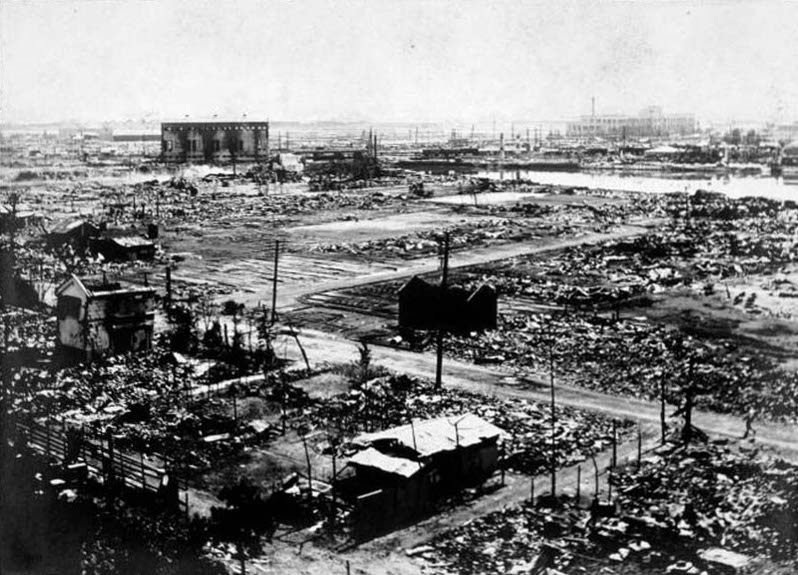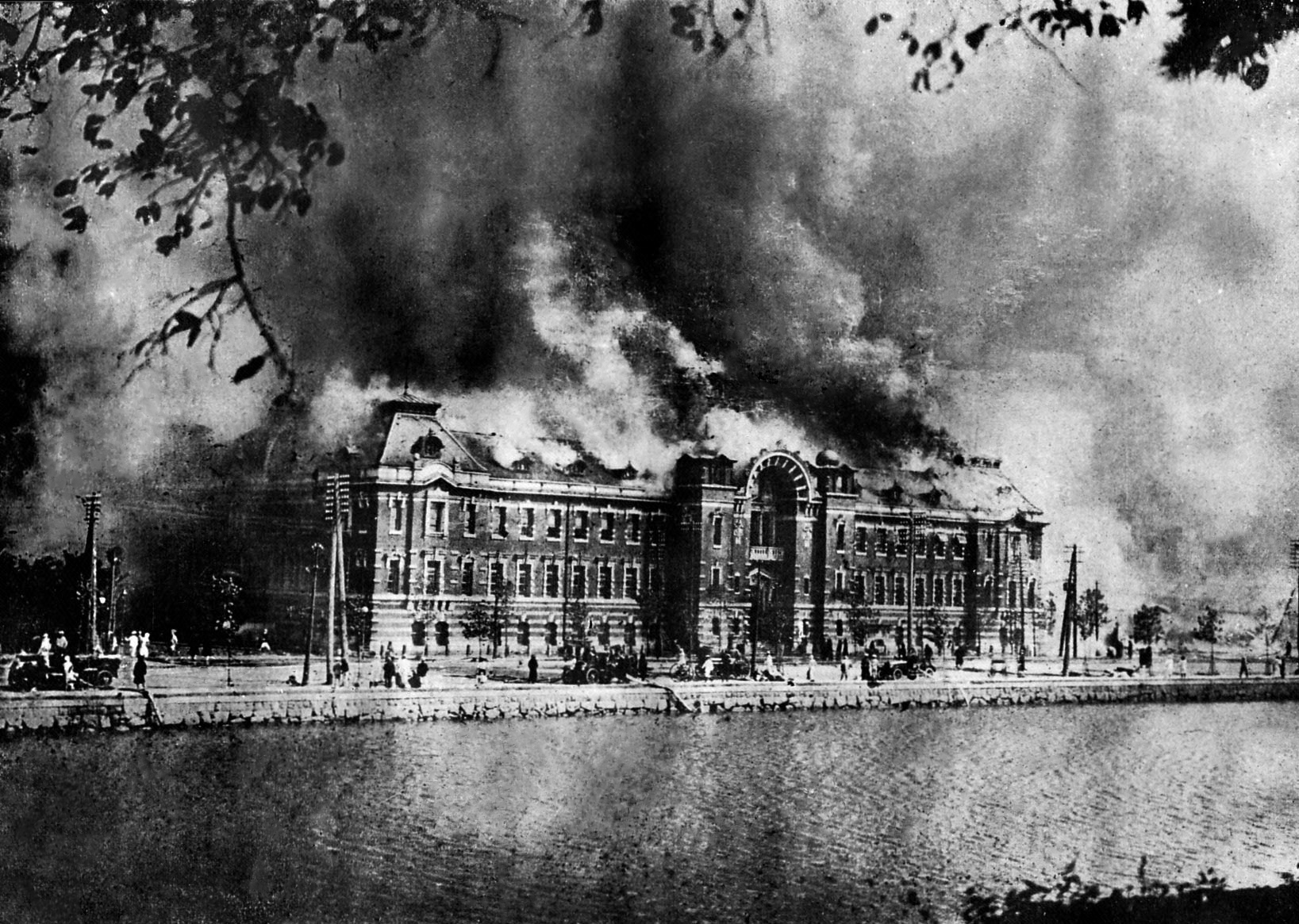Kanto Earthquake, Japan, 1923
Enlarge text Shrink text- GeoRef Thes.(Kanto earthquake, 1923)
- USGS Earthquake Hazards Program/Magnitudes of significant earthquakes web site, Apr. 2, 2003(Kanto, Japan, Sept. 1, 1923, 7.9)
- Kengelbacher, A. Great Kanto Earthquake 1923, via WWW, viewed May 8, 2003(on 1 Sept. 1923, one of the worst earthquakes in world history hit the Kanto plain and destroyed Tokyo, Yokohama, and the surroundings)
- The Kanto Earthquake Memorial Museum, via Tokyo essentials web site, May 8, 2003(The Great Kanto Earthquake struck at two minutes to midday on Sept. 1, 1923)
- The 1923 Tokyo earthquake, via Saint Louis Univ. Earthquake Center web site, May 8, 2003(the quake is remembered by Japanese authors as the Great Kanto Earthquake, Kanto being the name of the region which includes Tokyo) HTML header (Tokyo Earthquake)
- Dahlmann, J. The great Tokyo earthquake, September 1, 1923, 1924.
The Great Kantō earthquake (関東大地震, Kantō dai-jishin, Kantō ō-jishin) also known in Japanese as Kantō daishinsai (関東大震災) struck the Kantō Plain on the main Japanese island of Honshū at 11:58:32 JST (02:58:32 UTC) on Saturday, September 1, 1923. Varied accounts indicate the duration of the earthquake was between four and ten minutes. Extensive firestorms and a fire whirl added to the death toll. The earthquake had a magnitude that ranges between 7.9 to 8.2 on the moment magnitude scale (Mw ), with its focus deep beneath Izu Ōshima Island in Sagami Bay. The cause was a rupture of part of the convergent boundary where the Philippine Sea plate is subducting beneath the Okhotsk microplate along the line of the Sagami Trough. In the immediate aftermath of the earthquake, the Kantō Massacre began. Rumors emerged that ethnic Koreans in Japan had poisoned wells or were planning to attack cities. In response, the Japanese police and bands of armed vigilantes killed ethnic Korean civilians and anyone they suspected of being Korean. Estimates of the death toll from the massacre vary, with most third-party sources citing fatalities ranging from 6,000 to 10,000. Since 1960, September 1 has been designated by the Japanese government as Disaster Prevention Day (防災の日, Bōsai no hi), or a day in remembrance of and to prepare for major natural disasters including tsunami and typhoons. Drills, as well as knowledge promotion events, are centered around that date as well as awards ceremonies for people of merit.
Read more on Wikipedia >
 Topic
Topic







